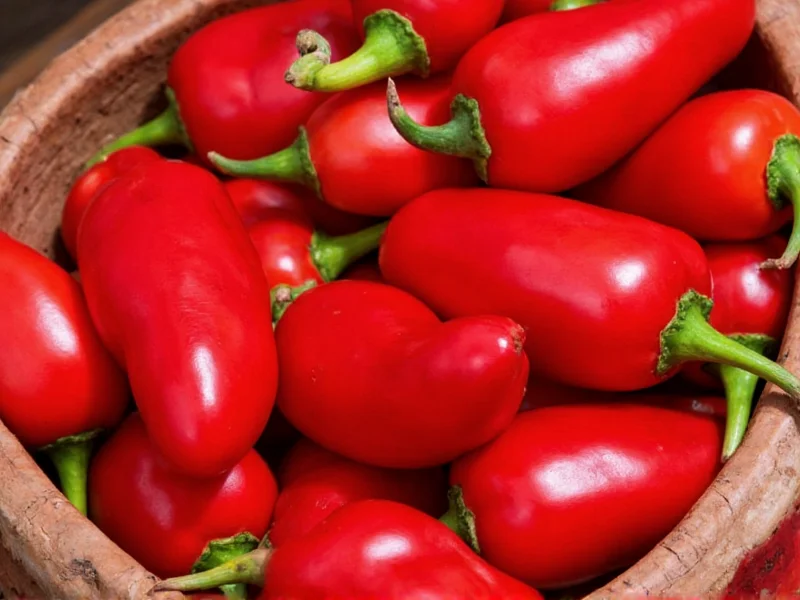When exploring are hatch chillies hot, it's essential to understand that these New Mexico-grown peppers offer a complex heat profile that differs from batch to batch. Unlike consistently fiery peppers like habaneros or ghost peppers, Hatch chilies provide a more nuanced experience that balances heat with distinctive flavor notes.
Understanding Hatch Chili Varieties and Heat Range
Hatch chilies actually represent several varieties of New Mexico chilies grown in the Hatch Valley region of New Mexico. The term "Hatch" refers to the geographic origin rather than a single specific cultivar. This distinction matters when evaluating how hot are hatch green chilies compared to their red counterparts.
Heat levels in Hatch chilies depend on multiple factors:
- Growing conditions: Sun exposure, soil composition, and water stress significantly impact capsaicin production
- Ripeness: Green (unripe) Hatch chilies tend to be milder than fully ripened red varieties
- Specific strain: Some Hatch varieties like the 'Bishop's Crown' run hotter than others
- Individual pepper variation: Even within the same plant, heat can vary dramatically
| Pepper Type | Scoville Heat Units (SHU) | Heat Comparison |
|---|---|---|
| Hatch Green Chile (mild) | 1,000-2,500 | Much milder than jalapeño |
| Hatch Green Chile (medium) | 2,500-5,000 | Similar to jalapeño |
| Hatch Green Chile (hot) | 5,000-8,000 | Hotter than jalapeño |
| Jalapeño Pepper | 2,500-8,000 | Reference point |
| Serrano Pepper | 10,000-23,000 | Significantly hotter |
Factors That Influence Hatch Chili Heat Levels
Understanding why are hatch chilies hot requires examining the biological factors that determine capsaicin production. Capsaicin, the compound responsible for heat in chilies, develops as a defense mechanism against predators. Environmental stressors actually increase capsaicin production:
Water stress is perhaps the most significant factor—peppers grown with less water typically develop more heat. This explains why Hatch chilies from drier growing seasons often test hotter. Similarly, temperature fluctuations during growth can intensify heat levels, with greater day-night temperature differences generally producing spicier peppers.
The soil composition in the Hatch Valley region—mineral-rich with excellent drainage—contributes to the distinctive flavor profile that makes these chilies special. While this doesn't directly increase heat, it creates the ideal conditions for balanced flavor development alongside moderate heat.
Culinary Applications Based on Heat Level
When considering are new mexico hatch chilies hot enough for recipes, the answer depends on your specific dish and heat preference. The beauty of Hatch chilies lies in their versatility across the heat spectrum:
Mild Hatch chilies (1,000-2,500 SHU) work beautifully in dishes where you want pepper flavor without significant heat. These are perfect for:
- Family-friendly chili recipes
- Stuffed pepper dishes
- Creamy Hatch green chile soups
- Blended sauces for children or heat-sensitive individuals
Medium Hatch chilies (2,500-5,000 SHU) provide that classic southwestern kick that enhances rather than overwhelms:
- Traditional New Mexico green chile stew
- Enchilada sauces
- Roasted pepper toppings for burgers and sandwiches
- Marinades for grilled meats
Hot Hatch chilies (5,000-8,000 SHU) deliver noticeable heat while maintaining complex flavor:
- Spicy salsas and hot sauces
- Meat rubs for bold flavor profiles
- Specialty hot dishes requiring significant heat
- Infused oils for controlled heat application
Managing Hatch Chili Heat in Cooking
If you've ever wondered how to reduce heat in hatch chilies, several techniques can help moderate their spiciness while preserving flavor:
Removing the inner membranes and seeds eliminates up to 80% of the capsaicin, as these contain the highest concentration of heat compounds. Soaking roasted Hatch chilies in milk or cream before use can also neutralize some heat, as capsaicin is fat-soluble but not water-soluble.
When cooking with Hatch chilies, remember that heat intensifies over time. A dish that tastes moderately spicy when first prepared may become significantly hotter after sitting for several hours as the capsaicin distributes more evenly throughout the dish.
Common Misconceptions About Hatch Chili Heat
Several myths persist about hatch chili heat level comparison that deserve clarification:
Myth: All Hatch chilies are extremely hot.
Reality: While some can be quite spicy, most commercial Hatch chilies are bred for moderate heat that appeals to broader audiences.
Myth: Red Hatch chilies are always hotter than green ones.
Reality: Ripeness affects flavor more than heat—red chilies develop sweeter, fruitier notes while heat levels remain relatively consistent.
Myth: Larger Hatch chilies are milder.
Reality: Size has minimal correlation with heat; environmental factors play a much larger role in determining spiciness.
Seasonal Availability and Heat Consistency
The hatch green chili season runs from late summer through early fall, typically August to October. During this peak season, you'll find the freshest, most flavorful Hatch chilies with the most consistent heat profiles. Off-season frozen or canned Hatch chilies may exhibit different heat characteristics due to processing methods.
When shopping for Hatch chilies, look for firm, glossy peppers with tight skins. The heat level isn't visually apparent, but fresher peppers generally provide more predictable heat and superior flavor. Many specialty grocers now label Hatch chilies by heat level (mild, medium, hot), making it easier to select based on your hatch chili heat preference.











 浙公网安备
33010002000092号
浙公网安备
33010002000092号 浙B2-20120091-4
浙B2-20120091-4